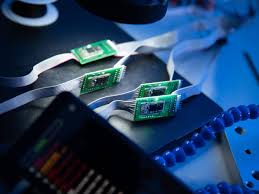Quantum computing is evolving rapidly, nd 2025 is an especially critical year—where theory starts to converge with practical potential. If you’re a quantum researcher or an engineer designing QPUs, having an explicit roadmap makes it easier to navigate breakthroughs, scale complexity, and align your projects with breaking milestones.
Here, we offer a clear, step-by-step guide—spanning short, mid, and long term. We draw from the latest information available from IBM, Quantinuum, Alice & Bob, and reports that identify milestones such as error correction, logical qubit advancements, and hybrid architectures. Our goal is to assist you in planning with clarity, setting realistic expectations, and creating actual-world progress.
The Current Landscape: NISQ & Quantum Readiness
First, it’s critical to understand the environment we’re in—the Noisy Intermediate Scale Quantum (NISQ) era—where hardware is still fragile and scaling is limited. Practical applications now rely on hybrid quantum-classical systems, often focused on optimization, chemistry, or modeling niche problems. Many organizations suggest that hardware + software readiness, developer tools, and talent readiness all shape what “quantum preparedness” means today.
Roadmap Phases at a Glance
Short-Term: 2025–2027
- Error Mitigation & Correction: IBM is integrating error-suppression tools into Qiskit Runtime to enhance result quality and pave the way for fault tolerance.
- Logical Qubit Development: Quantinuum’s Apollo initiative aims for fully fault-tolerant computing, supporting complex algorithms beyond classical reach.
- Hybrid Systems Integration: IBM and AMD’s quantum-centric supercomputing plan blends quantum and HPC workflows to accelerate real-world applications.
Mid-Term: 2028–2030
- Quantum-Centric Supercomputers: IBM targets systems with 4,000+ qubits and modular architectures capable of supporting utility-scale workloads.
- Cat Qubit-Based Fault Tolerance: Alice & Bob propose a path using cat qubits with significantly fewer qubits needed to achieve Shor’s algorithm execution—and ultimately build practical quantum hardware by 2030.
- Quantum Networking Infrastructure: Cisco is advancing foundational infrastructure that may enable a quantum internet within 5–10 years.
Long-Term: Post-2030
- Industry-Ready Quantum Products: Visionary planning includes combining modular, error-corrected processors with mature supply chain and developer ecosystems.
- Market & Policy Preparedness: Nations like the UK are training quantum-literate talent and strategizing for cybersecurity threats such as post-quantum cryptography (Q-Day).
Phase-Wise Breakdown & Tasks
| Phase | Goals & Technology Focus | Recommended Actions |
|---|---|---|
| Short-Term | Error correction (Qiskit), hybrid systems, logical qubits | Benchmark hardware, test QEC, prototype hybrid use cases |
| Mid-Term | High-qubit supercomputers, cat-qubit QPU, quantum network | Collaborate with leaders, explore new qubit types, integrate quantum into classical networks |
| Long-Term | Fully fault-tolerant QC, operational ecosystem | Invest in ecosystem development, train talent, prepare cryptographic transition plans |
Conclusion
As quantum computing edges toward utility, having a clear and structured roadmap allows researchers and engineers to target achievable milestones. From immediate work on error correction and hybrid architectures to mid-term advances like cat-qubit designs and future network infrastructures, this roadmap helps bridge the most critical gaps.
Remember! Planning now ensures you’re ready for mainstream quantum—pushing innovation, retaining research relevance, and securing leadership in a technology poised to reshape computation.





